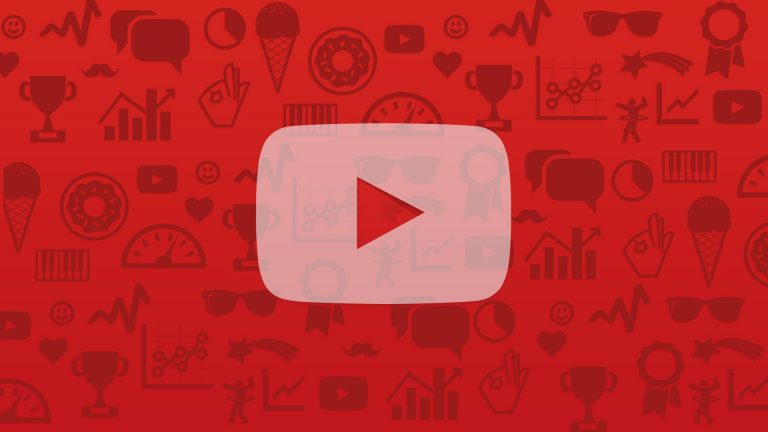
Want More YouTube Views? Here are Tips 5 To Follow
1: Identify A Target Audience
“Target audience” is a term that’s often relegated to matters of advertising and marketing — and there’s a good reason why marketers are so adamant about identifying the proper target audience. It’s simple logic: if you want something to be seen, then you need to show that something to the people who would enjoy seeing it. Or another way to look at it: you can increase your views by molding your content to fit the expectations of those who will watch it.
If I want to produce a series of comedy sketches, I need to ask myself a few questions. What age group do I want to engage? What type of comedy does that age group tend to enjoy? Which topics will they find interesting? How do these people tend to find the videos they watch? The answers to these questions will help me tailor my videos to the kind of people I want watching them. You can do the same for your videos.
2: Maintain Consistent Quality
They say first impressions are everything and that’s incredibly true of the YouTube world. I can’t count how many times I’ve opened a video and immediately exited out due to some drastic shortcoming in quality. Getting someone to open your video is one thing; keeping them hooked all the way to the end is another. But intriguing them enough that they’ll check out the rest of your videos? That’s when your views will start climbing up.
Quality can be indicated by any number of factors:

-
- Video quality. No matter how good your content may be, if no one can make out what any of it means, they won’t stick around. Try to aim for at least 480p, but 720p seems to be the norm nowadays with 1080p as the cream of the crop.
-
- Production quality. This is everything that makes a video feel polished. Edit your videos and remove intros that are too long, cut from scene to scene and eliminate dead air, use proper lighting and audio capture tools, and apply post-production effects only when necessary.
-
- Metadata. Maximize the visibility of your videos by using eye-catching titles, proper video descriptions, and relevant tags. Don’t try to bait-and-switch your viewers as it will do more harm than good. Be honest but don’t sell yourself short.
- Release schedule. If you don’t put out videos on a regular schedule, whether it’s one per day or one every two weeks, your subscribers will begin to wonder where you’ve gone. On the other hand, being diligent about this conveys the sense that you are serious and dedicated about your content. Not adhering to a release schedule can lose you viewers.
3: Interlink Your Videos
Ever wonder why the big names on YouTube like to fill their videos with annotations here and there? It’s because interlinking videos is one of the best ways to increase visibility. It’s a strategy used on websites all the time (we use it here at MakeUseOf) and it’s been proven to increase view counts. There’s a reason why the big names rely on their annotation links so much.
Think about it. You have a YouTube account full of videos that you’ve created. Someone happens to run a particular search query on Google and ends up clicking a link to your video. At this point, they’re already watching your content, so why not throw in an annotation in the bottom corner that takes them to another one of your videos? Now you’ve converted one view into two views. Interlinking creates a web of content that sucks viewers right in. You will lose out on a lot of potential views if you don’t utilize it.
4: Create Public Playlists
This tip is sort of an extension of the previous tip. Annotations are the obvious way to interlink videos, but if you ask me, playlists are less distracting, more organized, and ultimately more useful for people browsing your videos. Plus, viewers tend to disable YouTube annotations anyway.
There are a few ways you can take advantage of a playlist:
- Serial content. If you’re producing a tutorial series or you’ve broken up one big video into multiple smaller segments, a playlist keeps them all in the same place in the right order. Viewers who find one video can easily watch the remaining videos, and if they jumped in right at the middle, they can go to the very first video with just one click.
- Topical content. If you produce videos that cover a number of different topics, playlists are a great way to keep them all separate from one another. That way, if someone stumbles across your videos for gardening but doesn’t care about your cooking series, they can watch all of the videos that pertain to there interest without frustration.
The key is this: if they’re already watching one of your videos, it likely means they’re interested in what you have to say. Do your viewers a favor and put all of that content where it’s easy for them to reach! They get what they want and you get their views. It’s a win-win.
5: Match Thumbnail to Content
Let’s go back to the notion of first impressions. When you search for videos on YouTube, one of the main things you see in the results is a thumbnail. A lot of people base their entire decision of whether or not they’ll click a video solely on the quality of a thumbnail. It’s not nice to judge a book by its cover, but we do it all the time anyway. And with Google results showing YouTube thumbnails as well, this is one aspect that you really want to optimize.
What makes a good thumbnail? That’s a hard question to answer. Obviously you want one that best exemplifies the content and quality of your video. You want it to be clear and you want potential viewers to know that you’ve put in some real effort into your video. The best tactic is to put yourself in the shoes of someone that might find your video in a search: what are they looking for and what sort of thumbnail would entice them?



